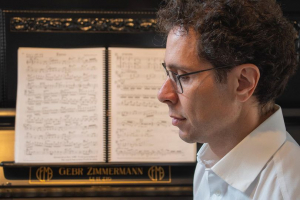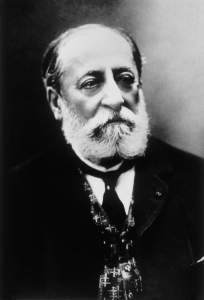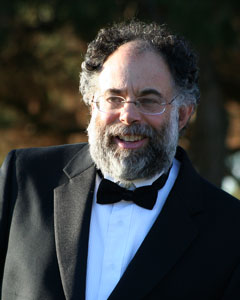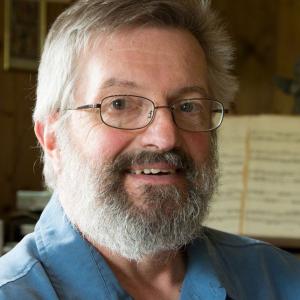The Suggested Repertoire from Around the World for Developing Bands series is a new WASBE program of instructional materials to assist music directors in identifying exceptional works from around the world that are playable by developing musicians. Each of the selections in this series provides a myriad of musical elements that might be explored and developed within the rehearsal context, but the goal is to present music of artistic merit that aligns most directly to the composer’s unique voice. These are selections that stand out from works written largely for teaching purposes.
Our installments include four-five such works, each to be contributed by WASBE members from throughout the world. The offerings include exceptional and diverse works from around the world. Some of the selections will be well known while others will be quite unfamiliar to most – and there will be more than a few older compositions that we hope will be revisited, reacquainted, or discovered anew.
This third installment (April 2023) is submitted by Matthew George, Secretary of WASBE and the John Ireland Distinguished Professor of Music and Director of Bands at the University of St. Thomas and also Artistic Director of Grand Symphonic Winds (USA).
Arraial Da Ventania – Daniel Maudonet – Gr. 3

https://www.jwpepper.com/Arraial-Da-Ventania/10189988.item
An arraial is an open-air space used for festive events. The title of this piece is completed by the word ventania or “windy,” designating a specific space at the seashore. The style of the piece is called baiao, a syncopated rhythm characteristic of the music of the Northeast of Brazil. The work utilizes percussion accessories as a feature and is a wonderful example of one of the most popular dance forms in Brazil.
Brazilian-born Daniel Maudonnet is a graduate of the Faculdade de Música Carlos Gomes in São Paulo and of the Berklee College of Music in Boston (1998). He wrote Arraial da Ventania commissioned by the Conservatoire of Tatui for a project called Project “Pro-Bandas” led by past president of WASBE, Dario Sotelo.
Folksong of Climbing Mountain – Chen Qian – Gr. 1

https://jclinkmusic.com/product/folk-song-of-climbing-mountain/?v=7516fd43adaa
“Folksong of Climbing Mountain” is a Jiangxi Xingguo folksong, meant to depict the “Horizontal Row.” The row in this case describes the rugged road between two mountains. The Xingguo dialect is depicted in this folksong with the words “Ah Lai” (musically represented in the first three notes) and is a phrase commonly used in conversation. It is used in folksongs to remind the listener of its meaning and to give an alert that the other side’s song about to begin. Because of its long-term use, it has become a symbol of the genre of this type of folksong and yet it also strengthens the lyricism of the Jiangxi Xingguo folksong music. This is an excellent piece to perform as “authentic” Chinese music and introduces young musicians to a creative use of the pentatonic scale.
Chen Qian, born in Guiyang, began violin lessons with his father at the age of three and started playing piano at age four. At seventeen, he worked as pianist for the City Song and Dance Ensemble of Guiyang. He recently retired as composer for the Military Band of the Chinese People’s Liberation Army. His range of works cover symphonic, chamber, television and film music, and have been performed all over the world. In 1997, he was honored with a concert of all wind music at the Beijing Concert Hall, the first of its kind in China.
Sur les bords du Nil Camille Saint-Saëns/ed . Felix Hauswirth – Gr. 3.5

Portrait du compositeur français Camille Saint-Saëns. (Photo by API/Gamma-Rapho via Getty Images)
https://www.youtube.com/watch?v=E3QS5_WT-RE
As the first decade of the twentieth century was drawing to a close, the musical style of Camille Saint-Saëns (1835–1921) was being eclipsed by newer trends in his native land of France. But abroad, he was still considered the greatest living French composer, and Saint-Saëns enjoyed travel around the world to continued acclaim. In 1908 he visited Egypt, which at that time was an autonomous vassal state of the Ottoman empire. The march Sur les bords du Nil (“On The Banks Of The Nile”) was composed during this trip.
Sur les bords du Nil is the third of four original compositions by Saint-Saëns for military band, preceded by Orient et occident (1869) and Hymne franco-espagnol (1900) and followed by Hail California (1915). This 2019 edition for wind ensemble by Felix Hauswirth (WASBE past president) is based on the same original arrangement for piano four hands by Saint-Saëns. While musically a bit more sophisticated in terms of performance demands than some other pieces on this series, it nonetheless provides an experience for younger wind bands to perform authentic music composed by one of the most prolific composers of the Romantic era.
Bucimis – Traditional Bulgarian/Bob Lipton – Gr. 3

https://www.jwpepper.com/Bucimis/10187794.item
Bulgarian folk music is unique in Europe for its asymmetrical rhythms, defined as “Bulgarian rhythms” by the famous Hungarian composer and ethnomusicologist Bela Bartok. Although it uses Western meters such as 2/4, 3/4, and 4/4, Bulgarian music also includes meters with 5, 7, 9, 11, 13, and 15 beats per measure, most easily understood as combinations of “quick” and “slow” beats. Bucimis is a traditional line dance in 15/16 whose rhythm is quick-quick-quick-quick-slow-quick-quick, or 2-2-2-2-3-2-2. The dancers dance Bučimiš low to the ground and flat-footed, using small steps with a constant bounce. This work is a wonderful opportunity for young musicians to be exposed to changing time signatures but scored in traditional duple and triple meters.
Bob Lipton graduated with honors with a degree in music education from San Francisco State University. He is retired after 25 years of teaching middle school band and orchestra. He has over 60 compositions and arrangements published.
Benediction – John Stevens – Gr. 3

https://www.youtube.com/watch?v=twi8LXI-QJM
Benediction was originally a work for tuba/euphonium quartet and was intended to be a sonorous “amen” of vocal character for an audio recording primarily comprised of more lively works. The wind band version was completed shortly after the original setting and provides young musicians an opportunity to perform a richly scored, lyrical piece of music. As in the original, the work calls for euphonium solo at the beginning and ending of the work. The challenge for musicians will be to maintain energy across long phrase groupings.
John Stevens has composed over 50 original compositions and has almost as many arrangements to his credit. He is internationally renowned for his works for brass, particularly for solo tuba, euphonium and trombone, tuba/euphonium ensemble, brass quintet and other brass chamber combinations. He is the winner of numerous ASCAP awards and has received many composition grants and commissions. In 1997 he was commissioned by the Chicago Symphony Orchestra to compose a tuba concerto.


